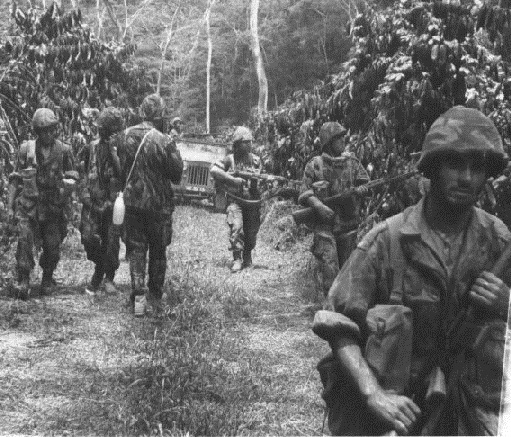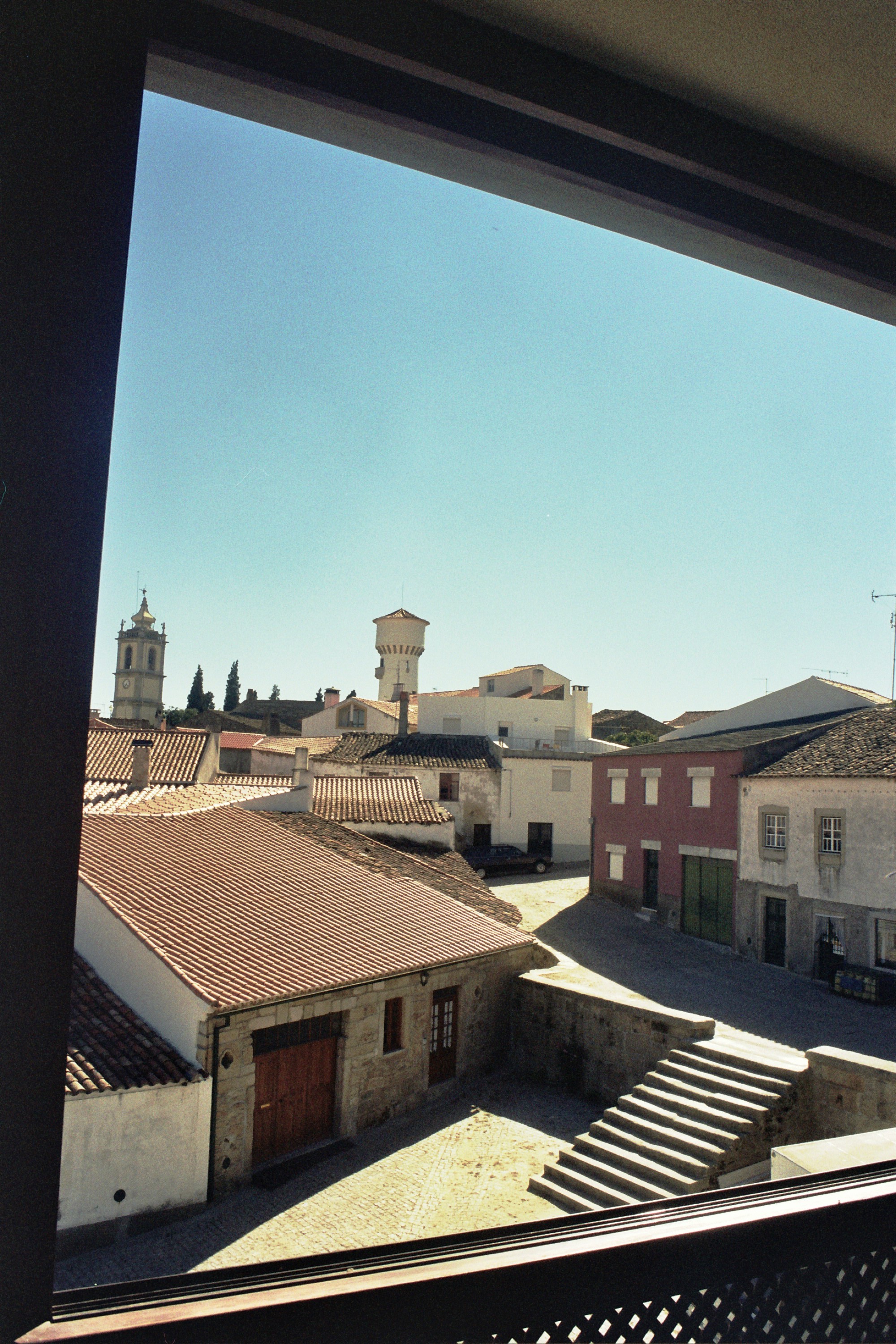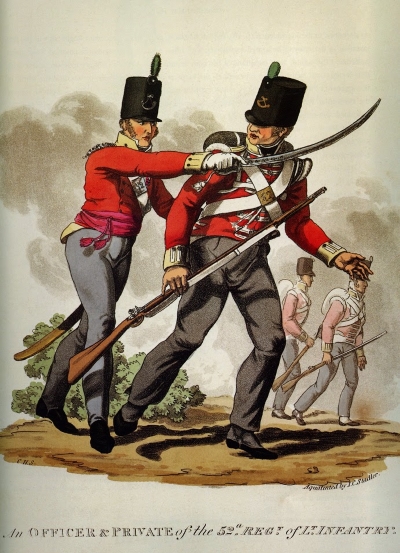|
Combat Of The Côa
The Combat of the Côa (July 24, 1810) was a military engagement that occurred during the Peninsular War period of the Napoleonic Wars. It took place in the valley of the Côa River and it was the first significant battle for the new army of 65,000 men controlled by Marshal André Masséna, as the French prepared for their third invasion of Portugal. As the British-Portuguese forces were outnumbered here, on July 22, General Arthur Wellesley, 1st Duke of Wellington sent Brigadier-General Robert Craufurd a letter, saying that he (Wellington) was "not desirous of engaging in an affair beyond the Coa." On July 24, Craufurd's Light Division, with 4,200 infantry, 800 cavalry, and six guns, was surprised by the sight of 20,000 troops under Marshal Michel Ney. Rather than retreat and cross the river as ordered by Wellington, Craufurd chose to engage the French, narrowly avoiding disaster. The French objective was to force the Light Division back across the Côa in orde ... [...More Info...] [...Related Items...] OR: [Wikipedia] [Google] [Baidu] |
Peninsular War
The Peninsular War (1807–1814) was the military conflict fought in the Iberian Peninsula by Spain, Portugal, and the United Kingdom against the invading and occupying forces of the First French Empire during the Napoleonic Wars. In Spain, it is considered to overlap with the Spanish War of Independence. The war started when the French and Spanish armies invaded and occupied Portugal in 1807 by transiting through Spain, and it escalated in 1808 after Napoleonic France occupied Spain, which had been its ally. Napoleon Bonaparte forced the abdications of Ferdinand VII and his father Charles IV and then installed his brother Joseph Bonaparte on the Spanish throne and promulgated the Bayonne Constitution. Most Spaniards rejected French rule and fought a bloody war to oust them. The war on the peninsula lasted until the Sixth Coalition defeated Napoleon in 1814, and is regarded as one of the first wars of national liberation. It is also significant for the emergence of larg ... [...More Info...] [...Related Items...] OR: [Wikipedia] [Google] [Baidu] |
King's German Legion
The King's German Legion (KGL; german: Des Königs Deutsche Legion, semantically erroneous obsolete German variations are , , ) was a British Army unit of mostly expatriated German personnel during the period 1803–16. The legion achieved the distinction of being the only German force to fight without interruption against the French during the Napoleonic Wars. The legion was formed within months of the dissolution of the Electorate of Hanover in 1803 and constituted as a mixed corps by the end of 1803. Although the legion never fought autonomously and remained a part of the British Army during the Napoleonic Wars (1804–15), it played a vital role in several campaigns, most notably the Walcheren Campaign, the Peninsular War, and the Hundred Days (1815). The legion was disbanded in 1816. Several of the units were incorporated into the army of the Kingdom of Hanover, and became later a part of the Imperial German Army after unification in 1871. The British German Legion, ... [...More Info...] [...Related Items...] OR: [Wikipedia] [Google] [Baidu] |
16th Light Dragoons
The 16th The Queen's Lancers was a cavalry regiment of the British Army, first raised in 1759. It saw service for two centuries, before being amalgamated with the 5th Royal Irish Lancers to form the 16th/5th Lancers in 1922. History Early wars The regiment was raised in 1759 by Colonel John Burgoyne as the 16th Regiment of (Light) Dragoons, being the second of the new regiments of light dragoons; it was also known as Burgoyne's Light Horse. The regiment was closely involved, undertaking several cavalry charges, in the action leading up to the capture of the French Garrison of Belle Île in April 1761 during the Seven Years' War. It also made a major contribution to the British victories against the Spaniards at the Battle of Valencia de Alcántara in August 1762 and at the Battle of Vila Velha in October 1762 during the Anglo-Spanish War. In 1766 the regiment was renamed after Queen Charlotte as the 2nd (or The Queen's) Regiment of (Light) Dragoons, the number being an a ... [...More Info...] [...Related Items...] OR: [Wikipedia] [Google] [Baidu] |
14th Light Dragoons
The 14th King's Hussars was a cavalry regiment in the British Army, first raised in 1715. It saw service for two centuries, including the First World War, before being amalgamated with the 20th Hussars to form the 14th/20th King's Hussars in 1922. History Early wars The regiment was raised in the south of England by Brigadier-General James Dormer as James Dormer's Regiment of Dragoons, and ranked as the 14th Dragoons, in 1715 as part of the response to the Jacobite rebellion. It took part in the Battle of Preston in November 1715 after which it escorted some of the rebels to Lancaster Gaol. The regiment was sent to Ireland in 1717 and remained there until 1742. It fought but was completely outflanked at the Battle of Prestonpans in September 1745 and then took part in the equally disastrous Battle of Falkirk Muir in January 1746 during the Jacobite rising of 1745. The regiment returned to Ireland in 1747 and it was formally renamed as the 14th Regiment of Dragoons in 1751. It ... [...More Info...] [...Related Items...] OR: [Wikipedia] [Google] [Baidu] |
George Anson (British Army General)
General Sir George Anson, GCB (born Adams; 1769 – 4 November 1849), was a British officer and politician from the Anson family. He commanded a British cavalry brigade under the Duke of Wellington during the Peninsular War and sat for many years as a Whig Member of Parliament. Early life Anson was the second son of George Adams (who changed the family surname to Anson by royal license on 30 April 1773) and his wife The Hon. Mary Vernon, daughter of the first Lord Vernon.''The Annual Register, Or, A View of the History and Politics of the Year – 1849'', page 283, (Published 1850, J. G. & F. Rivington) He had an elder brother, Thomas Anson, 1st Viscount Anson, and a younger brother, Sir William Anson, 1st Baronet; another younger brother was Frederick Anson, who became Dean of Chester. Career The Peninsular Wars and gaining of reputation He entered the British Army in 1786 and served under the Duke of York and Sir Ralph Abercromby in Holland. It was to be in the P ... [...More Info...] [...Related Items...] OR: [Wikipedia] [Google] [Baidu] |
52nd (Oxfordshire) Regiment Of Foot
The 52nd (Oxfordshire) Regiment of Foot was a light infantry regiment of the British Army throughout much of the 18th and 19th centuries. The regiment first saw active service during the American War of Independence, and were posted to India during the Anglo-Mysore Wars. During the Napoleonic Wars, the 52nd were part of the Light Division, and were present at most major battles of the Peninsula campaign, becoming one of the most celebrated regiments, described by Sir William Napier as "a regiment never surpassed in arms since arms were first borne by men". They had the largest British battalion at Waterloo, 1815, where they formed part of the final charge against Napoleon's Imperial Guard. They were also involved in various campaigns in India. The regiment was raised as a line regiment in 1755 and numbered as the "54th Foot"; they were renumbered as the "52nd Regiment of Foot" in 1757. In 1781, the regional designation "52nd (Oxfordshire) Regiment of Foot" was given and in 18 ... [...More Info...] [...Related Items...] OR: [Wikipedia] [Google] [Baidu] |
Caçadores
The Caçadores (hunters) were the elite light infantry troops of the Portuguese Army, in the late 18th and early 19th centuries. Units of ''Caçadores'' – with features somewhat different from the original ones – continued to exist in the Portuguese Armed Forces until the 1970s, namely the Caçadores Especiais (special hunters) – several special forces companies of the Portuguese Army created by the Special Operations Troops Centre at the beginning of the 1960s and heavily employed throughout the Portuguese Colonial War (1961-1974) in Africa. Etymology ''Caçadores'' is the plural of ''caçador'', the Portuguese word for "hunter". It has also been used to designate each one of the elite light infantry soldiers of the Portuguese Army. As such it is a direct equivalent of the German military term '' Jäger'' and the French military term '' chasseur''. It may also be considered comparable to the English language term ''ranger''. Origins The origins of the ''Caçadores'' ... [...More Info...] [...Related Items...] OR: [Wikipedia] [Google] [Baidu] |
Rifle Brigade
The Rifle Brigade (The Prince Consort's Own) was an infantry rifle regiment of the British Army formed in January 1800 as the "Experimental Corps of Riflemen" to provide sharpshooters, scouts, and skirmishers. They were soon renamed the "Rifle Corps". In January 1803, they became an established regular regiment and were titled the 95th Regiment of Foot (Rifles). In 1816, at the end of the Napoleonic Wars, they were again renamed, this time as the "Rifle Brigade". The unit was distinguished by its use of green uniforms in place of the traditional redcoat as well as by being armed with the Baker rifle, which was the first British-made rifle accepted by the British Army in place of smooth-bore muskets. The 95th was the first regular infantry corps in the British Army to be so armed. They performed distinguished service in both the First and Second World Wars. Post war, in 1958 the regiment formed part of the Green Jackets Brigade as 3rd Green Jackets and was amalgamated with the ... [...More Info...] [...Related Items...] OR: [Wikipedia] [Google] [Baidu] |
43rd (Monmouthshire) Regiment Of Foot
The 43rd (Monmouthshire) Regiment of Foot was an infantry regiment of the British Army, raised in 1741. Under the Childers Reforms it amalgamated with the 52nd (Oxfordshire) Regiment of Foot (Light Infantry) to form the 1st and 2nd battalions of the Oxfordshire Light Infantry in 1881. The regiment went on to become the Oxfordshire and Buckinghamshire Light Infantry in 1908. History Raising and Seven Years War The regiment was raised at Winchester by Colonel Thomas Fowke as Thomas Fowke's Regiment of Foot in 1741. The regiment's first deployment was on garrison duties at Menorca in 1742. The regiment was numbered 54th Regiment of Foot from 1747 until 1751 when it became the 43rd Regiment of Foot. In May 1757 the 43rd sailed for North America, arriving at Halifax, Nova Scotia the following month to defend the British North American colonies during the French and Indian War (the North American Theatre of the Seven Years' War) against France. A detachment of the 43rd was defeated ... [...More Info...] [...Related Items...] OR: [Wikipedia] [Google] [Baidu] |
Almeida Municipality
Almeida () is a fortified village and a municipality in the sub-region of Beira Interior Norte and the District of Guarda, Portugal. The town proper has a population of 1,300 people (2011). The municipality population in 2011 was 7,242, in an area of . It is located in Riba-Côa river valley. The present Mayor is António Baptista Ribeiro, elected by the Social Democratic Party. The municipal holiday is July 2. Location The village lies west of the border with Spain and straddles the N332 road.Tourist & Motoring Atlas – Spain & Portugal. Publisher: Michelin Edition 2014. Work: page 42. The Rio Côa run northwards a short distance to the west of the village. The town's castle fortress was completed in 1641 and is located to the north of the village and is approached through the two tunnel gates and dry moat named the ''Portas de São Francisco''. Twin town * Mutzig, Bas-Rhin, France History In and around the environment of Almeida, evidence of Human occupation can ... [...More Info...] [...Related Items...] OR: [Wikipedia] [Google] [Baidu] |
Light Division
The Light Division was a light infantry division of the British Army. Its origins lay in "Light Companies" formed during the late 18th century, to move at speed over inhospitable terrain and protect a main force with skirmishing tactics. These units took advantage of then-new technology in the form of rifles, which allowed it to emphasise marksmanship, and were aimed primarily at disrupting and harassing enemy forces, in skirmishes before the main forces clashed. Formed in 1803, during the Napoleonic Wars, the Light Division was raised thrice thereafter: during the Crimean War, the First World War and from 1968 to 2007. Some light infantry units remained outside the Light Division. Origins of the Light Division The British Army's first three "Rifle Battalion" was raised by the 60th (Royal Americans) in 1797–99. The command of this first rifle battalion was given to Francis de Rottenburg, who had extensive experience with light infantry. While the 60th did not officially be ... [...More Info...] [...Related Items...] OR: [Wikipedia] [Google] [Baidu] |






